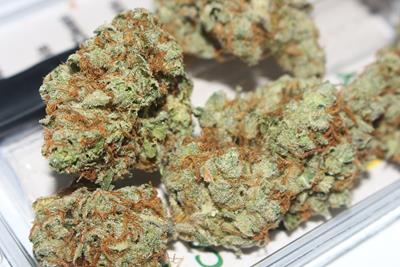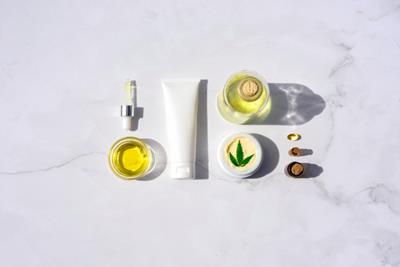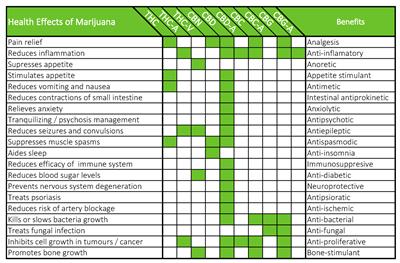
Friday April 27, 2018
By Andrew Ward
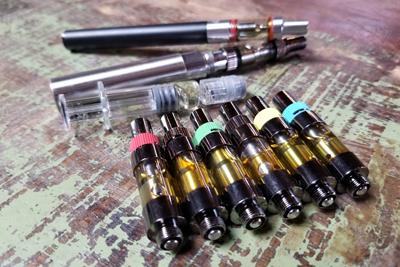 Health/Science
Health/Science
Cannabis vape pens and cartridges are some of the most popular products on dispensary shelves for their ease of use and ability to deliver potent hits on-the-go. These products are quickly becoming one of the fastest rising segments of the cannabis market, experiencing 400% growth in 2016 alone. To fill the demand for vaporizer cartridges, new products and brands are hitting the shelves across legalized states in rapid succession. However, that rapid product ascension may come with several potential negatives to your health.
Currently, the vaporizer cartridge market is fairly unregulated with little to no research surrounding some of the additives used in production. And while product manufacturers are required to disclose the ingredients within their vape cartridges, consumers often fail to understand if those ingredients are safe for human consumption. With more than just cannabis oil going into numerous cartridges across the country, consumers need to be asking themselves, “Should I consume this?”
Let’s take a closer look at what’s actually in your vape cartridge and some key things to look for to make sure you’re buying safe and reliable products on your next trip to the dispensary.
What Cutting Agents Are in Your Vape Cartridge?
As it currently stands today, many consumers are unaware of what’s actually inside of their vape cartridges – and we really can’t blame them. Most people find the convenience factor of vape pens and cartridges to be extremely valuable. Not to mention that brands have dedicated their marketing efforts towards making vape cartridges seem fun, safe and social.

Thankfully, there’s a decent variety of brands that live up to these claims and more and more quality products made without cutting agents or non-cannabis additives are popping up across the country. However, there are still many products that don’t abide by the same level of quality control. These types of vape cartridges leave several questions unanswered. They include uncertainties about what you’re vaping and which chemicals are in the cannabis oil – like cutting agents.
Cutting agents are used in vape cartridges to thin out concentrates so they work better with vaping devices and atomizers.
By making the oil compliant with these devices, manufacturers introduce potentially unhealthy chemicals into the cannabis oil. The most common and criticized cutting agent is polyethylene glycol (PEG), which can contain ethylene oxide. Similarly so, propylene glycol (PG), which is used in the production on polymers and food processing, is often added.
Though the FDA recognizes PG as generally safe for humans, conflicting studies prove otherwise. As Rolling Stone noted, "A study from 2010 showed inhaling propylene glycol can exacerbate asthma and allergies, and multiple studies have shown that propylene glycol and polyethylene glycol break down into the carcinogens formaldehyde and acetaldehyde — especially when vaped at high temperatures.”

Terpene additives are another common addition to cartridges to enhance the flavor profile of the product. In fact, they are sometimes seen as an alternative to PEG and PG and also used to thin out thicker cannabis oils. Terpenes can be derived from cannabis itself or from other natural plants, and are generally safe for consumers. However, some companies have been known to use knockoff terpene products from cleaning agents that are sold in bulk.
When it comes to added terpenes, we’d advise sticking to products that use cannabis-derived terpenes for several reasons. First, they contribute to the entourage effect, which provides a full-spectrum experience and a more robust high. Secondly, while plant-derived terpenes come from natural sources as well, there really hasn’t been much research surrounding their consumption and the extraction methods used to acquire them are often ambiguous.
What about Pesticides and Electronics?
Recent reports from California have surfaced suggesting that vape cartridges also have a pesticide problem. Chemicals from California farmers include avermectin, myclobutanil and bifenazate. Each has been proven to be toxic or carcinogenic with effects ranging from nosebleeds to comas.
According to SC Labs, up to 80% of the concentrates it tested came back with signs of pesticides.
In some cases, companies seeking cheaper manufacturing costs might go overseas for vape pen components and cartridges. If the supplier isn't reputable, the company is now in business with unknown cartridge elements and potentially harmful vape equipment to boot.
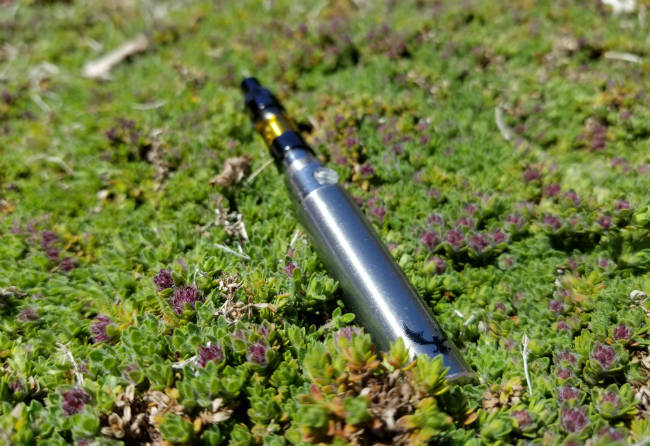
Currently, California and other markets suffer from a lack of regulation. Oversights in regulations extend from pesticide use in cannabis cultivation to what is allowed inside a vape cartridge. Consumers and sometimes even companies are left in the dark to figure out what is in their products. This is far from what the cannabis movement has embodied over the years and needs correcting immediately. Certainly no one wants the government to oversee every piece of the industry, but the market also needs sweeping change to ensure consumer safety.
Avoiding Potentially Harmful Substances
Vaping has proven itself to be an efficient way for consumers to get high. Yet, if its ease of use is countered by dangerous chemicals and additives, then it is potentially no safer than many products currently offered.

Thankfully, the increased popularity of vaporizer cartridges is pushing brands to create products that adhere to higher standards. Through the course of consumerism, people have gradually demanded that their products be free of harmful chemicals and additives. In the rapidly evolving cannabis space, it makes sense for consumers to start expecting their vape cartridges to be free of any potential harm.
As a result, a growing number of vape users are turning their attention to CO2, distillate and live resin cartridges that are additive-free and made with cannabis only.
Doubling down, producers are starting to focus on selling products with 100% cannabis-sourced products. This has created a top-shelf criteria for vape cartridges, much like alcohol. For now though, there appears to be room for both inexpensive, potentially harmful cartridges and the higher-end, more thoroughly sourced products. With a fragmented market and varying levels of concern on the issue, there should be room for all companies for the foreseeable future. However, we’re hoping that quality products will begin to drive out the lower-end options as the market continues to progress.
What to Look for When Buying Vape Cartridges
Ultimately, it’s up to you to find out if your product is safe or not. Many states with legal markets require manufacturers to clearly list every ingredient used in a given product so always be sure to inspect the label before buying. Another general rule of thumb is to only consume products that you fully understand. If you are left guessing what additives may be in the product, it’s best to pass on this round for your own good.
To cut down on the guessing, you can look for certain red flags. First, it’s best to avoid potentially unsafe additives and chemicals. Some of the top additives to watch out for are:
Additives to Avoid
- Propylene Glycol (PG, or PPG)
- Polyethylene Glycol (PEG)
- Vegetable Glycerin (VG)
- Other medium chain triglycerides (MCT)
Going beyond the cannabis oil itself, it’s also a good idea to look at the cartridge and even the vape. Immediate red flags can be seen in the cartridge itself. It’s best to avoid plastic and low-grade wire. Additionally, broken or misaligned components like coils and the overall product construction are telling signs. Overall, be a conscious consumer. Look for products that appear well-made and list information clearly. In this emerging market, there’s no need for you to buy from anything less than 100% reputable and healthy.
The Final Verdict
There is no clear-cut overwhelming answers regarding the safety of each additive and chemical found in vaporizer cartridges. However, public sentiment and some data is enough to shift a few minds and businesses. Now, the health conscious movement is underway and forming a market share for itself.
Whenever possible, it’s best to choose a healthier option. When vaping, choose an option that you understand and do your best to consume only products that clearly spell out their ingredients. With so many ways to consume your cannabis, don’t settle for something that could harm you in the long run.
What are your thoughts on vape cartridges and their additives? Comment below!





